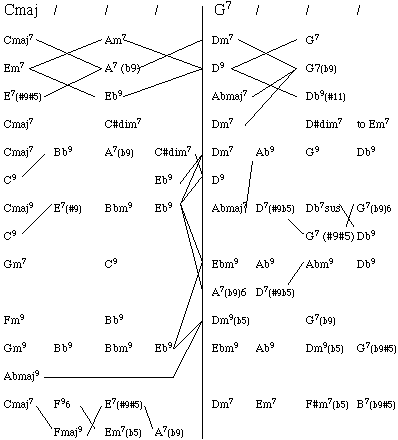
Turn arounds
- in major keys
- in minor keys
Most introductions set the mood of the song and lead the listener to know what to expect of what will follow. Some introductions are more mysterious, and some lead to surprises. Good introductions and endings can make songs more interesting, and provide arrangers with a place to come up with something that was not done in another version.
Many times just the rhythm section starts the introduction, with a lead line coming in only when the main melody starts. Intros are usually 4 or 8 bars long. Most introductions end on a V chord to help set up the beginning of the head. There are many ways to construct introductions, and some of the following techniques are often used in combination:
Most "turn arounds" are two bars long. They usually occur at the end of a tune to prepare for a return to the beginning. Below are a few turn arounds that can take the place of a two-bar tonic/dominant progression. The vertical line represents the bar line between the two bars. Each line can be read straight across horizontally or an alternate path can be followed by taking a slanted line.
The following examples are to replace the plain C - G7 progression. You can transpose them to fit other tonalities. Turn arounds in minor keys follow below.

Below are some turn arounds for minor keys. They may be followed horizontally or the alternate paths indicated by slanted lines.
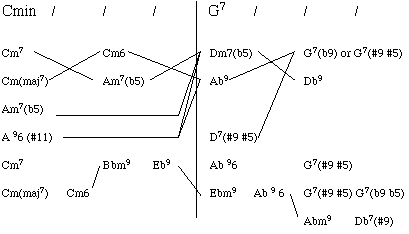
In the ii - V - I progression, any ii can be followed by any V. The final I depends on whether you are ending in a major or minor tonic.
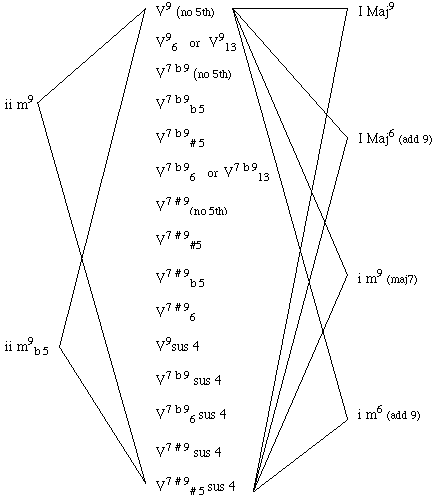
Any chord can be played in a number of different inversions. If you transposed these combinations to the other 11 keys and consider all the possibilities of inversions, you will have over 11,000 ways of playing the ii - V - I progression.
Starting in any key (represented by the "*"), you can follow any path to get to the final I chord.
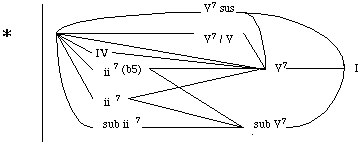
Another way to modulate is to use any ii-V-I progression variations shown above, ending in the new key
There are a number of ways to prolong arriving at the final tonic, in the case below, C major. The horizontal lines represent bar lines.
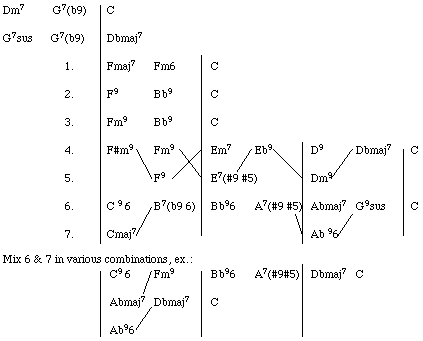
Another traditional way to end a song is to repeat the last phrase one or two times. On pop records you often hear a section repeated endlessly while it is faded out.
©2001 Robert Willey
[ Music 248 ]